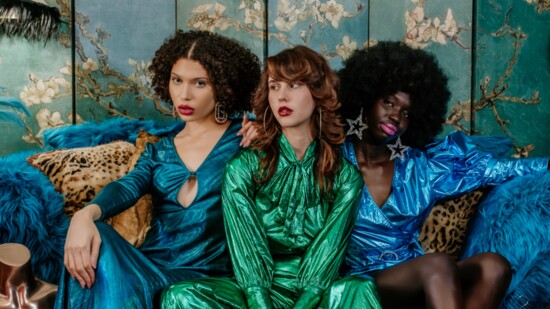Maximalist Style with Laura Citron
Laura Citron's journey into the fashion industry began in her mother's closet. Growing up in Louisiana, Laura was captivated by the bright, bold, and shimmering portal that catapulted her into a world of vintage glamour. "This magical place was packed with '70s lamé jumpsuits and '80s sequined Mardi Gras gowns," she recalls. Inviting friends over for "fashion shows" ignited a passion inside her that she didn't fully realize at the time.
Though always in love with fashion, Laura initially pursued broadcast journalism at LSU. A pivotal moment came when her cousin invited her to Los Angeles, where she landed a position at The Tyra Banks Show. "This is when I first realized that a career in fashion was a possibility," she says. Transferring to FIT in NYC the next semester, Laura's path in fashion truly began.
In New York, Laura explored various roles in the industry, from trend forecasting at WGSN to managing a luxury vintage boutique. After five years, she felt the need for a change and moved to Nashville in 2014, where she opened OPIUMvintage. As sourcing vintage goods became challenging, she began producing limited-edition vintage-inspired pieces, officially launching her line at Nashville Fashion Week in 2018.
Laura's label celebrates maximalist glamour and vintage inspiration. "My goal is to join the past and the present by drawing upon the nostalgia of decades past with a modern lens," she explains. Her influences include 70s designers like Bob Mackie and Halston and female singers like Cher and Tina Turner.
Laura prefers designing clothes that bring her joy rather than following trends. "I try not to follow trends! I design clothes that bring me joy!" she emphasizes. Her designs encourage women to feel unique and glamorous, embodying her mantra: fashion is fantasy.
(start on page 5 of the layout)
Finishing Touches: Expert Tips for Stylish Spaces with Michelle Kearns of Le Studio
After the hard work of a kitchen renovation or selecting large furniture pieces for a living room, it's time for the final finishing touches. This styling completes the space and the feel of the room. Michelle Kearns of Le Studio offered styling tips to help bring the room together and give it a finished look.
Where do you start when styling a coffee table? Shelves?
When do you know it's time to refresh your coffee table styling?
When styling coffee tables or shelves, I usually start with my anchor pieces. A statement bowl, great tray, large vases and pottery are good places to start, and then you can build around those pieces. And, of course, some great coffee table books. There is a good reason why we call them that! They are a great way to ensure that some items are raised, creating varying heights, textures and shapes.
How do you balance shape, color and texture on a coffee table with function?
I always incorporate several different shapes, colors and textures. Variety in sizes and shapes is important, but so is texture. A little metal, some wood and glass mixed in with pottery and books is always a little more interesting. I also like to incorporate some vintage or antique pieces. It's a great way to add a feeling of history to a space so that only some things appear shiny and new.
How many elements should you incorporate into shelf styling?
Should you collect shelf items first, then style? Or style as you collect?
When styling shelves, it's okay to have several like items—a collection of pottery in different sizes, shapes and textures, for example. If you're building your collection, start with what you have and add pieces over time. Books are a great filler and can easily fit in with any decor. If you are styling a space that feels more like a library, I reverse that approach. I like as many books as possible and then add a few key objects to add different shapes and textures.
How should the styling of shelves and tables in a space incorporate the color/theme of the room as a whole?
Generally speaking, I feel that your accessories should be cohesive with your furnishings. The colors, style and scale should reflect what you already have going on in the space. On the other hand, styling is a good way to include a few trendier and more colorful pieces, as long as they still speak to your aesthetic. It's so easy to change pillows and vases, so why not have a little fun with it?
"The first question I ask myself when styling a space is, what does this room need the most?" - Michelle Kearns
